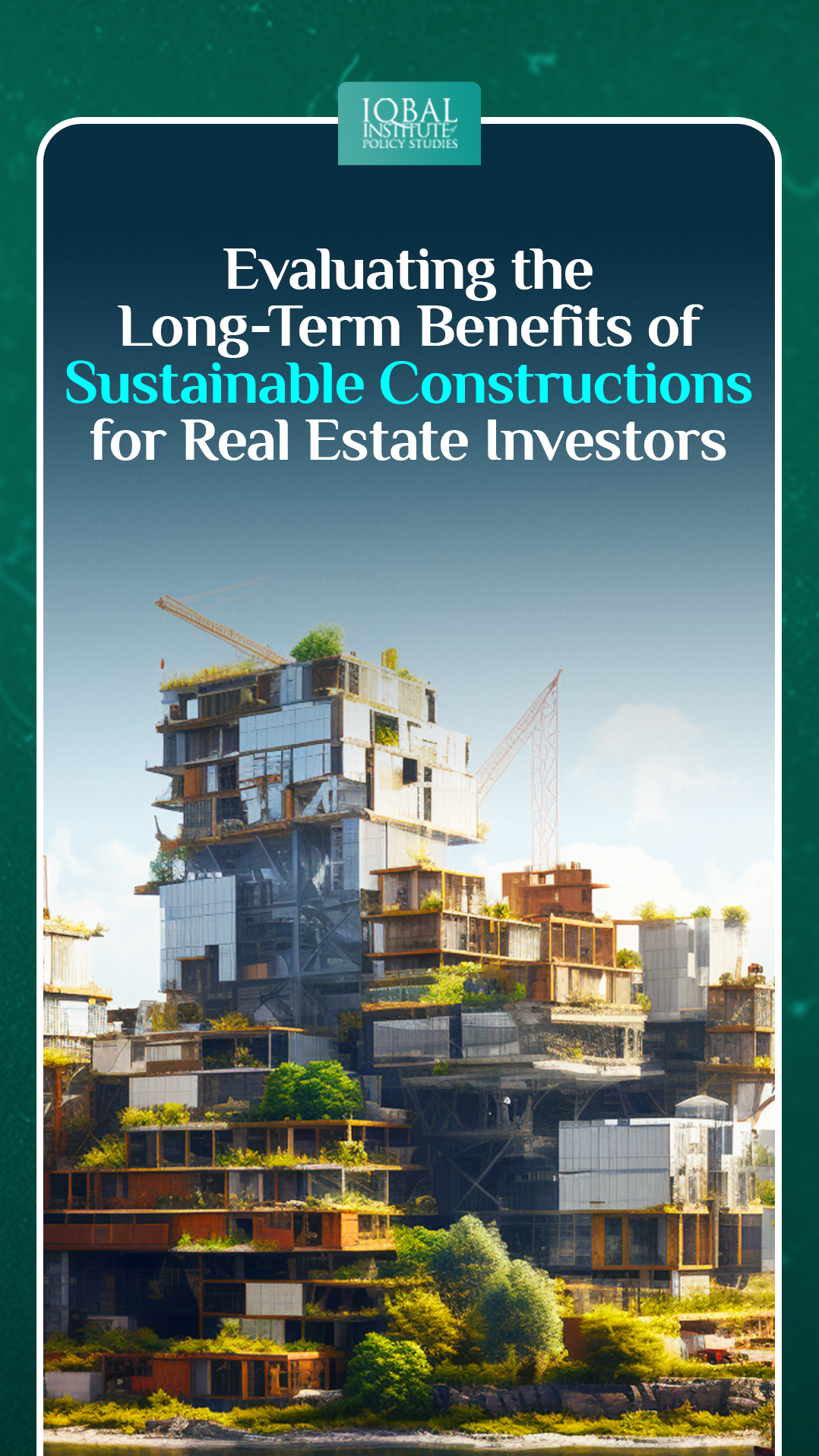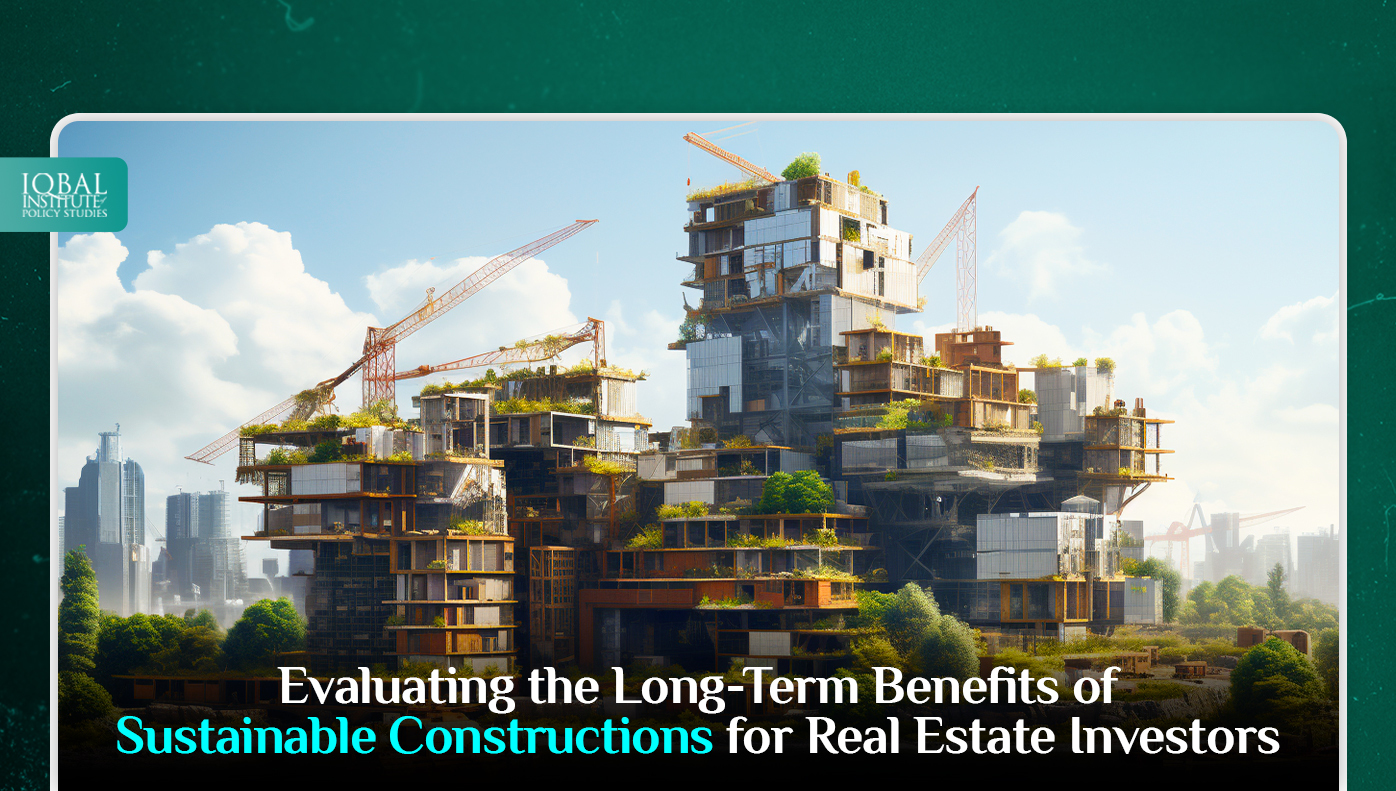As the world grapples with the challenges of climate change, resource scarcity, and environmental degradation, sustainable constructions have emerged as a promising solution to mitigate the negative impacts of traditional building practices. Real estate investors play a pivotal role in shaping the urban landscape and have a unique opportunity to drive positive change through their investment decisions. This comprehensive blog will delve into the long-term benefits of sustainable constructions for real estate investors. We will explore how embracing sustainability can enhance financial returns, reduce risks, improve asset performance, and contribute to a greener, more resilient future.
Enhanced Financial Returns
While some real estate investors might perceive sustainable constructions as costly in the short term, the long-term financial benefits often outweigh the initial investment. Several factors contribute to enhanced financial returns in sustainable real estate developments:
Lower Operating Costs
Sustainable buildings are designed to be energy-efficient, leading to reduced utility expenses over time. Features like LED lighting, smart climate control systems, and energy-efficient appliances help optimize energy consumption and cut costs for tenants and landlords.
Increased Property Value
Sustainable constructions command higher property values due to their lower environmental impact and improved overall performance. Studies have shown that properties with green certifications like LEED or BREEAM often sell at a premium and experience stronger demand from environmentally conscious tenants and buyers.
Competitive Advantage
As sustainability becomes an increasingly significant factor in property selection, investing in sustainable constructions can give real estate investors a competitive edge. Such properties are more likely to attract long-term, quality tenants and experience lower vacancy rates.
Positive Reputation
Investors who prioritize sustainability gain a positive reputation in the industry, attracting socially responsible partners and investors. A strong reputation can lead to more opportunities, partnerships, and access to funding for future projects.
Risk Mitigation
Sustainable constructions offer real estate investors inherent risk mitigation benefits:
Regulatory Compliance
As governments worldwide tighten building codes and environmental regulations, investing in sustainable constructions ensures compliance with current and future requirements. This reduces the risk of costly retrofits or potential penalties for non-compliance.
Climate Resilience
Climate change poses significant risks to traditional constructions, such as increased exposure to extreme weather events and rising insurance costs. With their focus on durability and adaptability, sustainable constructions are better equipped to withstand these challenges, safeguarding the investor’s assets.
Long-Term Tenant Retention
Sustainable buildings often provide healthier, more comfortable living and working environments. Tenants are more likely to stay longer in such spaces, reducing the risk of frequent turnover and associated leasing costs.
Future-Proofing Investments
Sustainable constructions consider long-term considerations, such as future resource scarcity and changing market demands. Real estate investors position themselves to thrive in a rapidly evolving market by investing in properties with sustainable features.
Improved Asset Performance
Sustainable constructions deliver superior asset performance over the long term:
Energy Efficiency
Sustainable buildings incorporate cutting-edge technologies and design principles that significantly reduce energy consumption. This leads to consistent energy savings, benefiting the investor’s bottom line.
Lower Maintenance Costs
Sustainable materials and building practices often require less maintenance and repair than traditional constructions. This lowers the burden of ongoing maintenance expenses and contributes to higher net operating income.
Increased Resale Value
As sustainability gains prominence in the real estate market, properties with sustainable features are more likely to attract buyers and investors, leading to quicker sales and potentially higher resale values.
Tenant Satisfaction
Sustainable buildings prioritise occupant health and well-being, increasing tenant satisfaction and loyalty. Satisfied tenants are more likely to renew their leases, reducing turnover costs and ensuring a steady stream of rental income.
Access to Green Financing and Incentives
Investing in sustainable constructions opens doors to a range of green financing options and incentives:
Green Loans and Mortgages
Financial institutions increasingly offer green loans and mortgages with favorable terms to support sustainable investments. These loans often come with lower interest rates, longer tenures, and flexible repayment options.
Tax Incentives
Many governments incentivize sustainable constructions by offering tax breaks or credits to real estate investors. These incentives can significantly reduce the project’s overall cost and increase its financial viability.
Alignment with Investor Values and ESG Goals
Environmental, Social, and Governance (ESG) considerations have become critical factors in investment decision-making. Sustainable constructions allow real estate investors to align their investments with their values and ESG goals:
Social Responsibility
Investing in sustainable constructions demonstrates a commitment to social responsibility by contributing to environmental conservation and improving the well-being of building occupants.
Risk Mitigation
ESG-conscious investors recognisze that sustainable constructions are better equipped to manage environmental and social risks, safeguarding their portfolios against potential financial losses.
Attracting ESG-Focused Investors
As ESG investing gains momentum, real estate investors who prioritisze sustainability are more likely to attract capital from institutional investors and individuals with strong ESG preferences.
Positive Impact on Communities and Society
Sustainable constructions have far-reaching impacts beyond financial returns:
Environmental Conservation
Sustainable buildings significantly reduce greenhouse gas emissions, water consumption, and waste generation, contributing to broader environmental conservation efforts.
Community Health and Well-being
Sustainable constructions prioritisze occupant health and comfort, creating spaces that foster productivity, creativity, and overall well-being for residents and workers.
Urban Resilience
As cities face the challenges of climate change, sustainable constructions play a pivotal role in building resilient communities that can withstand and adapt to changing environmental conditions.
Sustainable Urban Development
Real estate investors contribute to a more sustainable and harmonious urban landscape by investing in sustainable constructions, enriching the quality of life for current and future generations.
Conclusion
Real estate investors have a crucial role in driving positive change as the world moves towards a more sustainable future. Embracing sustainable constructions offers many long-term benefits, including enhanced financial returns, risk mitigation, improved asset performance, access to green financing and incentives, alignment with investor values and ESG goals, and positive impacts on communities and society.
Investing in sustainable constructions is financially prudent and a responsible and ethical choice that contributes to building a greener, more resilient world. By prioritising sustainability in their investment decisions, real estate investors can become pioneers in the transformation of the real estate industry and leave a lasting legacy of positive change for generations to come.
This article is written by Radma Nouman. Radmais a research analyst at the Iqbal Institute of Policy Studies (IIPS).



Leave a Reply